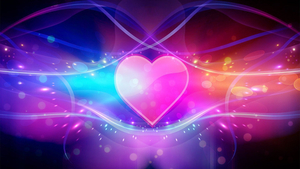20685767
Biology - Evolution Notes - TEST TOMORROW
Description
No tags specified
Flashcards by Lauren Curnutte, updated more than 1 year ago
More
Less

|
Created by Lauren Curnutte
almost 5 years ago
|
|
Resource summary
| Question | Answer |
| Evolution Notes | TEST TOMORROW |
| 1. Evolution - | the process through which species change over time. |
| 2. Biogeography - | the study of where organisms live/lived. |
| 3. Homologies - | similarities found in different species of organism. |
| 4. Homologous structures - | body parts of different organisms that have similar structures, but may have have different functions. |
| 5. Analogous structures - | body that have similar functions, but NOT a similar structure. |
| 6. Vestigial Structure - | body parts that do not seem to play a major role in life functions. Ex: appendix, legs on a skink. |
| 7. Fossils - | remains or imprint left of an organism that once lived. |
| 8. Insects - | trapped in resin on a tree. - whole, small organism. |
| 9. Sediment - | immediately covers dead organism, and encloses the hard parts and turns into rock. * sediment - matter that settles to the bottom of a liquid. |
| 10. Minerals - | seep in and slowly harden, leaving an imprint. - plants, organism with little/no hard parts. |
| 11. 2 conditions - | that favor fossil formation. |
| 12. Fossil Record, For example, Transition Fossils - | a timeline that shows how life has evolved on Earth. it is organized according to the age of fossils and their similarities. there is no fossil of a whale-like animal with 4 legs to prove modern whales evolved from land dwelling mammals. |
| 13. Two ways - | an organism can undergo evolution. |
| 14. Relative dating, Absolute dating (Radioisotope) - | a means of identifying the age of a fossil by comparing it to another fossil. measures the exact age of a fossil by comparing the amount of a radioactive form of an element contained in material of known age to the fossil. |
| 15. Evolution, Population - | process by which species change over time. a group of individuals that belong to the same species and that live in a particular location. |
| 16. Fitness - | an organism's ability to survive and reproduce in a given environment. |
| 17. Stabilizing Selection - | as creatures become adapted to a particular environment, natural selection can cause a decrease in gentle diversity throughout the population. |
| 18. Selective Breeding / Artificial Selection - | the intentional breeding of plants or animals to preserve certain favorable traits. |
| 19. Adaption - | a trait that increases an organism's chances of survived in its environment. |
| 20. Genetic / Inherited Variations - | differences in the traits of individuals of the same species. |
| 21. How we get these Genetic / Inherited Variations: | mutations, independent assortment, crossing over / recombination. |
| 22. Recombined chromosomes = | new genetic combinations - diversity - more likely to have traits that are adaptations for survival. |
| 23. Genetic drift - | the change in frequency of a gene in a population as a result of chance, meaning it can become quite frequent, or disappear. more likely to occur in smaller populations than larger ones. |
| 24. Gene flow - | the moving of genes from one population to another population of a species. |
| 25. Species , geographic isolation - | a group of organisms that can mate with each other to produce offspring that can also produce offspring. |
| 26. Adaptive radiation - | multiple descendant species, entertain, time, divergences, ensectial species. |
| 27. Divergent Evolution - | environment. |
| 28. Examples of Natural Selection - | a mutant gene causes bacteria to be resistant to penicillin and consequently is better able to survive. |
| 29. Can't breed, won't breed - | sperm does not fertilize egg. sperm will fertilize egg. |
Want to create your own Flashcards for free with GoConqr? Learn more.
